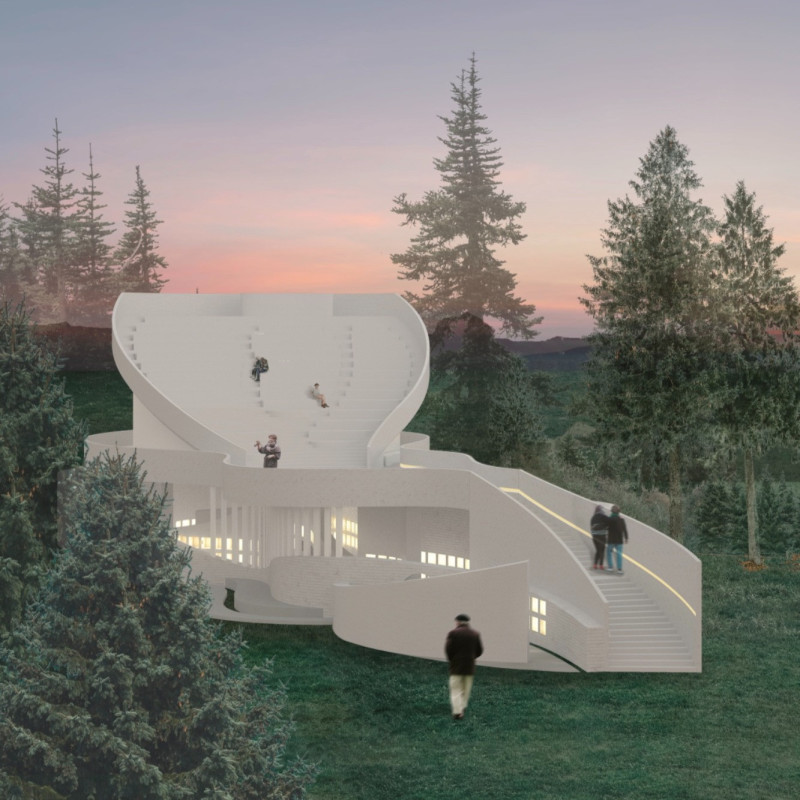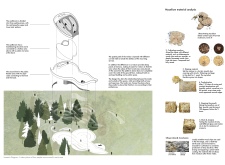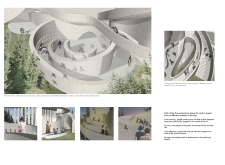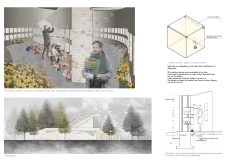5 key facts about this project
At the core of the design is an emphasis on sustainability, which is manifest in the careful selection of materials and construction methods that minimize the building’s environmental footprint. The project employs high-performance materials such as recycled steel, locally sourced timber, and low-emissivity glass, each chosen not only for their functional properties but also for their ability to contribute to the aesthetic vision. The use of these materials emphasizes a commitment to sustainability, showcasing an awareness of the ecological implications of modern architecture.
One of the project’s key features is its innovative spatial organization, which promotes flexibility and adaptability. Open floor plans are used strategically to encourage natural flow and interconnectivity within the space. This layout allows for dynamic use cases; areas can easily be transformed for different events or activities, making the building a hub for community engagement. The incorporation of movable partitions further enhances this flexibility, allowing users to customize spaces according to their needs.
The architectural design embraces natural light as a critical component, utilizing expansive windows and strategically placed skylights. This not only improves the building’s energy efficiency but also creates a warm and welcoming environment. Sunlight penetrates deep into the interior, illuminating spaces while fostering a connection with the outdoors. The thoughtful consideration of light cultivates an atmosphere where occupants feel connected to their surroundings.
In addition to the adaptive reuse of materials and an emphasis on natural light, the project incorporates green roofs and walls, contributing to urban biodiversity. These ecological features support a small ecosystem and offer occupants a glimpse of nature within the urban landscape. The integration of vegetation into the design not only enhances the aesthetic quality but also promotes wellness and reduces the heat island effect commonly found in urban settings.
Unique design approaches are also evident in the detailing of the façade, which serves both functional and visual objectives. The façade treatment utilizes a combination of vertical and horizontal elements, creating depth and texture that draw the eye. This articulation not only breaks up the mass of the building but also aids in passive temperature regulation, as it allows for better airflow and sun shading.
Moreover, the project is designed with community engagement in mind, providing spaces for public interaction that encourage social gatherings and collaboration. Open plazas and outdoor seating areas invite users to connect, fostering a sense of belonging and ownership within the community. These areas are thoughtfully landscaped with native plants, further reinforcing the connection between the building and its ecological context.
As one delves deeper into this architectural work, it becomes evident that every design detail is intricately linked to the project’s overarching goals. The thoughtful integration of materiality, spatial organization, and sustainability showcases a comprehensive understanding of modern architectural practices. This project exemplifies a harmonious dialogue between environment, function, and community, illustrating what contemporary architecture can achieve.
For those looking to explore further aspects of this project, including architectural plans, sections, designs, and innovative ideas, a deeper examination into these elements will provide a richer understanding of the architectural intentions and design outcomes that characterize this outstanding project. Engaging with these materials offers a more nuanced view of how the design responds to both its immediate context and broader architectural trends. Discovering the details will enhance the appreciation of the thoughtful layers embedded within this architectural endeavor.


























